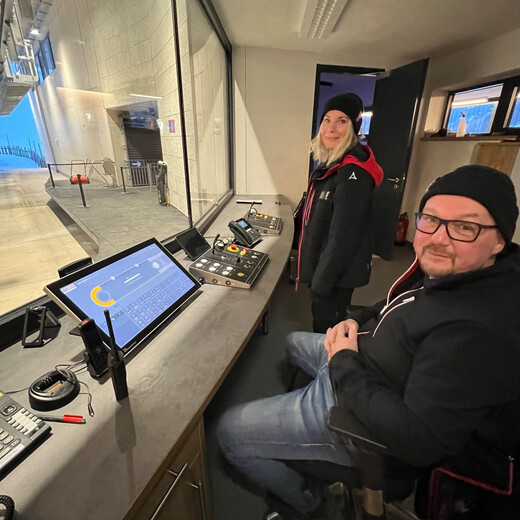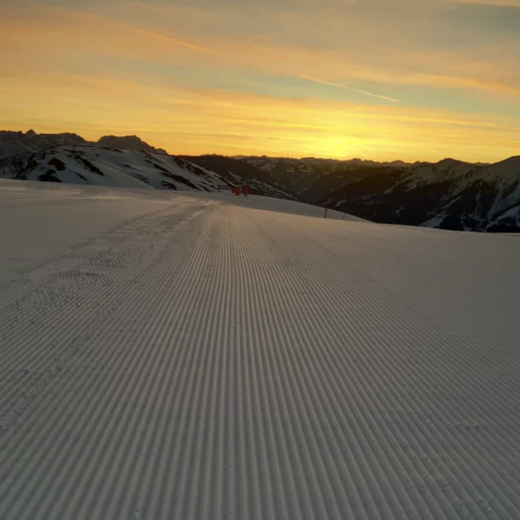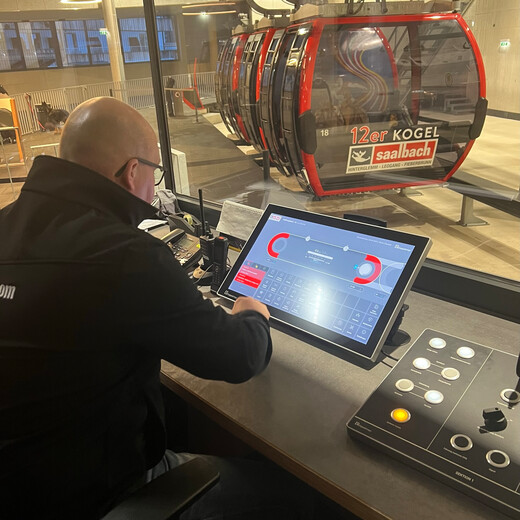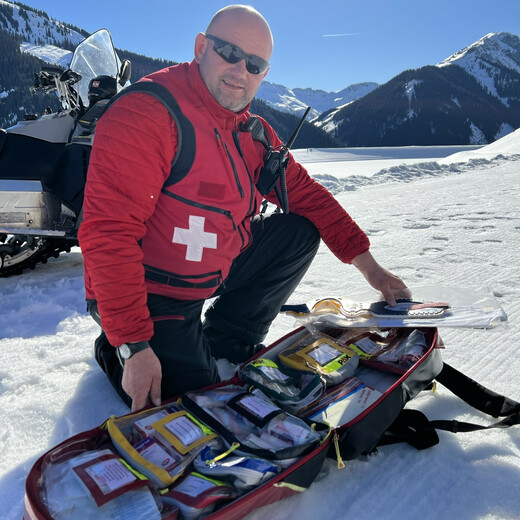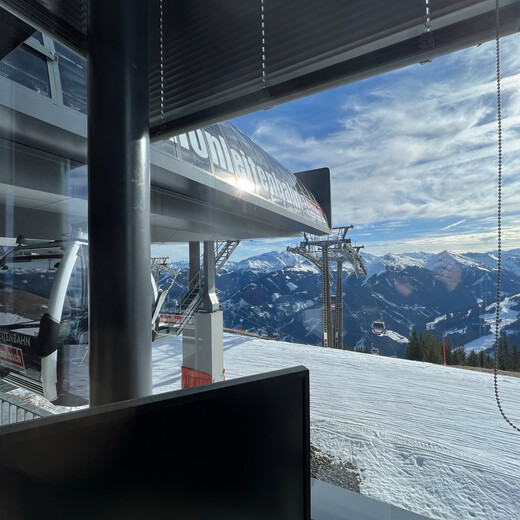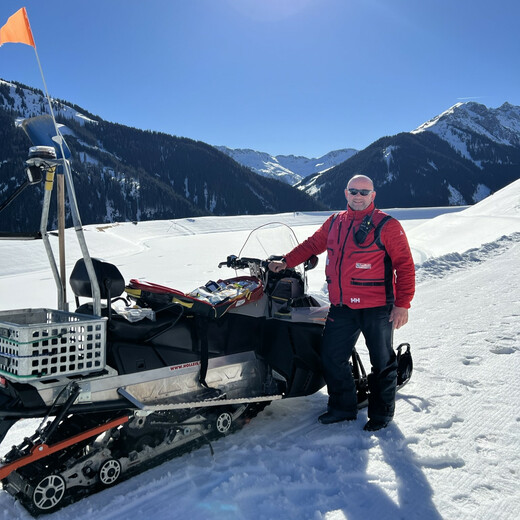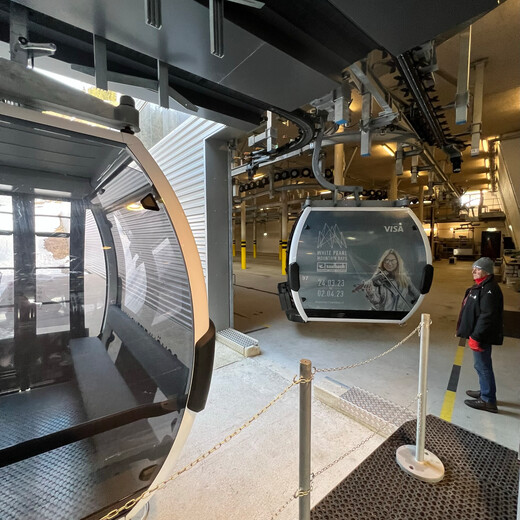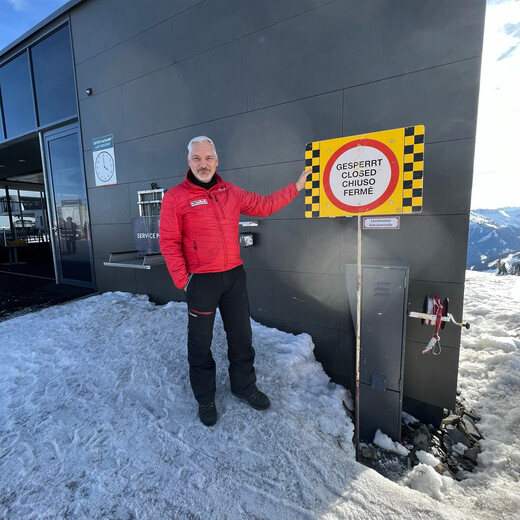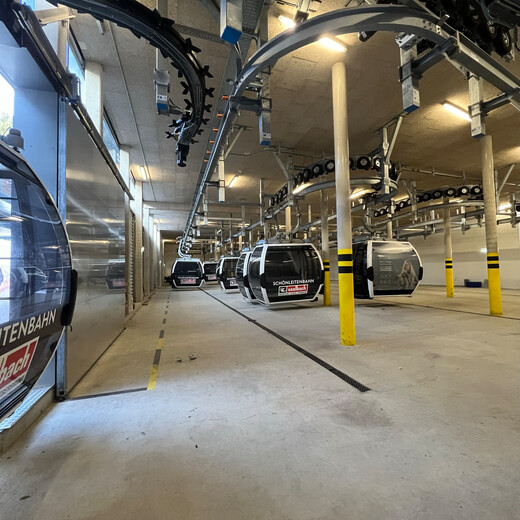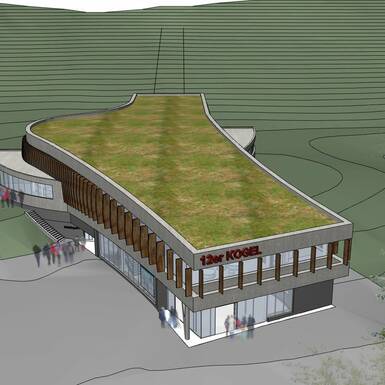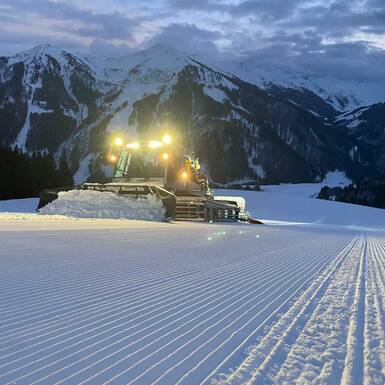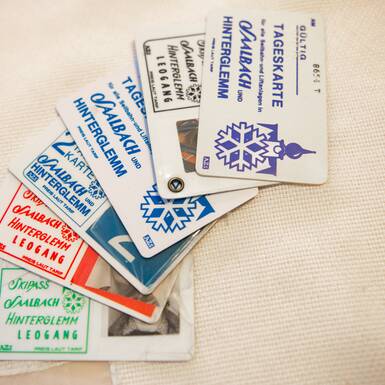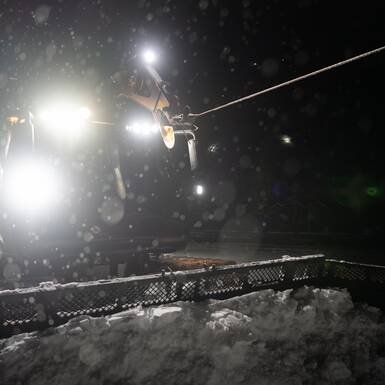- Backstage
24 hours on the mountain: The Day Shift
The sun is shining from the sky and the pistes are in excellent condition. The perfect day to start early in the morning and enjoy the 270 kilometres of downhill runs in the Skicircus Saalbach Hinterglemm Leogang Fieberbrunn to the fullest and to swing happily down into the valley in the evening just before the lifts close. And the next morning? As if by magic, perfectly groomed slopes, easy-going snow trails and parks are waiting again and the 70 lifts run tirelessly throughout the day. And that brings me to the topic of this story. Who are the people behind the smooth running of the ski area? Who prepares the cool runs, when, how and why - over and over again and every night anew? I was allowed to take a look behind the scenes and was there up close - 24 hours a day on the mountain. Let's start with the day shift!
The lifts in Saalbach Hinterglemm regularly start between 08:30 and 09:00. With the early start offer, you can also hit the slopes of some mountains earlier from mid-January. If you want to experience a sunrise on the mountain and enjoy the first runs on your own, you can access some of the most popular lifts as early as 08:00: the 12er KOGEL cable in Hinterglemm, for example. And because the start of the day naturally needs some preparation, I meet up with my work colleagues Wolfgang and Olivia at 06:30 for an early morning start to work.
The first tasks of the day at a glance
Unlocking & preparing the station, commissioning the lift:
1. empty rope run (so that the rope is cleared of snow and ice if necessary)
2. checking the apertures and checking the tyre conveyors, brakes, etc.
3. marking and starting the three cabins that are in the valley overnight
With the cabins that remained in the station overnight, the employees of the middle and mountain stations are now brought up the mountain. Two or three station staff and two piste rescuers man the individual stations. Over the next hour, materials and utensils for the operation are transported and distributed
Wolfgang and Olivia are a well-rehearsed team. Wolfgang has been employed by the cable car company since 1995. Originally a blacksmith, he completed his apprenticeship as a cable car technician in 2014. Olivia comes from Germany and is experiencing her second season in Saalbach - she has quickly settled in and enjoys the varied field of activity.
Once everything has been prepared and the OK for the piste inspections has been given, the lift operation can officially begin: The day begins - now also for the skiers!
Ski Patroller in the Hochalm Region
Wolfgang and Olivia start their day routinely, taking care of guests and technical operations for the next eight hours. Meanwhile, I hop over to the next mountain to meet with ski patroller Helli.
A local since the 1990/1991 winter season, Helli works with his colleagues at the lift company. They ensure safety during the day and perfect snow grooming at night.
Helli steps in for medical emergencies, injuries, or service tasks like equipment breakage. His extensive knowledge, decades of experience, and empathy ensure people feel well-cared for in tough situations.
His shift starts at 07:00 with initial patrols on the slopes, checking barriers, boundaries, runs, and signage.
The slopes fill up, and the rescuers are ready.
As the slopes get busy, Helli and his team are on standby. Their well-coordinated rescue system is flawless. For steep terrain rescues, colleagues at mountain stations use the 'Akia' (a toboggan for injured transport), while Helli, equipped with a Skidoo, assists in various situations. They offer prompt aid for injuries from ski accidents, medical emergencies, equipment failures, sudden fog, and more.
Helli prioritizes calm and balance in handling diverse situations.
Rescue Procedure
Ideally, help requests should come directly through the particular lift company. Contact numbers are in the piste map, with specific numbers for Hinterglemm and Saalbach. Public emergency services can also be contacted, though this may delay rescue team alerts. Helli and his team reach the site by Skidoo or Akia, carrying a comprehensive emergency backpack for initial care. Depending on the injury and condition, the ski patrol team – or a cable car from the nearest station – transports the injured to the valley. In emergencies, the Hinterglemm-based rescue helicopter 'Martin 6' is ready for rapid deployment.
Many grateful people personally thank the team later for their top-notch care and assistance. Helli, with over 30 years of experience, has many stories to tell.
In extreme cases, Helli literally carries the injured to the Skidoo, a skill honed through his lifelong hobby of 'Ranggeln' (a local wrestling sport).
Over the decades, changes in ski patrol include the influx of novice skiers due to modern lifts, altering challenges and ski behaviors. The excellent slope preparation and equipment encourage faster skiing. Awareness and adherence to FIS slope rules are crucial for everyone's safety.
Continuous changes demand modern, service-oriented safety concepts and teamwork, something well-established after over 30 years of experience.
Helli's Advice to Skiers
He strongly recommends wearing helmets, especially for children, who should also wear back protectors. He stresses the role model responsibility, particularly for ski instructors and guides. Helmets can prevent severe injuries, and it's better to be over-protected than under-protected. He urges skiers to be mindful of others and adjust their speed according to conditions.
The variety of work, interaction with people, and the beauty of his workplace make his job special.Considering the large number of people enjoying their favorite hobby in the Saalbach Hinterglemm Leogang Fieberbrunn ski circus, incidents are relatively rare. It's comforting to know that someone is always there to help.
I also had an extensive conversation with Helli about snowmaking, a fascinating topic for another story.
Workplace Mountain – Kohlmais, Bernkogel & Schönleiten
Various people work throughout the day in the ski area, like at the Bernkogel, Kohlmais, and Schönleiten lifts. Continuous technical checks and slope inspections, as well as monitoring and supporting the lift entry and exit points, are part of their job. Their passion for this diverse, beautiful, and responsible profession is evident as they greet the next group of guests arriving comfortably at the top.
Evening Routine: When the gondolas are parked at the Schönleiten cable car station
It's 4:00 PM, signaling the end of the shift for the team. I head to Saalbach to meet with the operations managers. At 4:15 PM, the last guests are transported up the mountain for their final descent. Once all the gondolas are empty, the "pushing out" process and final tasks begin.
The end of the lift operations doesn’t mean the end of the day’s work. A final patrol on the slopes is conducted, followed by the slow retraction of the gondolas into the stations. The tasks now include:
- The staff at the mountain station set out for a ski patrol. They ski down the slopes or use a Skidoo, informing any remaining skiers about the imminent slope closure and assisting them to descend if necessary.
- A staff member remains at the mountain to check the empty gondolas for cleanliness and to close the slopes from the top using highly visible boards and barriers. Warning signs are also activated. At 5:00 PM, the night shift crew begins grooming the slopes, making it crucial to adhere to the slope closure.
- The staff at the middle station adjust the tracks so that the approaching gondolas go to the garage – the station – instead of continuing down to the valley.
- In the next 40 minutes, 102 gondolas are parked, all except three.
- After locking and securing everything, the staff member at the mountain station takes the very last gondola, along with the rescue bag, down to colleagues at the middle station.
- Once the middle station is closed, the remaining staff members are transported to the valley in the last three gondolas.
- These three gondolas stay at the valley station overnight and are used by the staff to return to the middle and mountain stations at 7:00 AM the next morning.
Upon arrival at the bottom, doors are locked, lights turned off, and everyone reflects on a successful workday.
Shift Change - Night Shift Crew Takes Over
The mountain becomes quiet. After the last skiers have descended, the night shift crew's actual workday begins. The snowmakers and snow groomer drivers work unseen. By 8:00 AM the next morning, when the first skiers arrive, the slopes are perfectly groomed, and the fun slopes and snow trails refreshed.
This routine is the focus of the next story: 24 Hours on the Mountain – Night Shift

